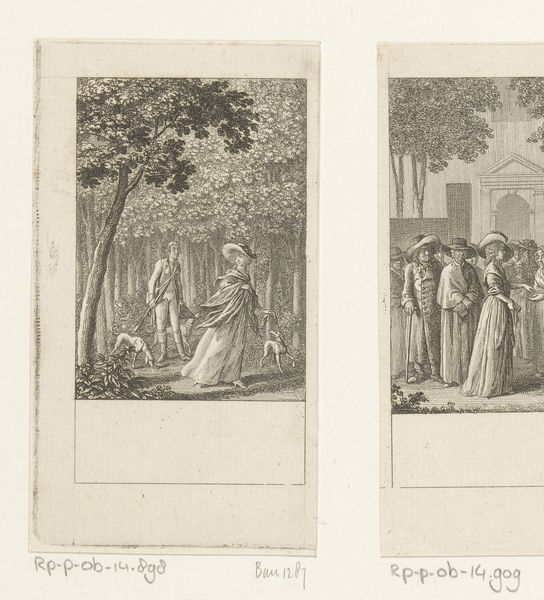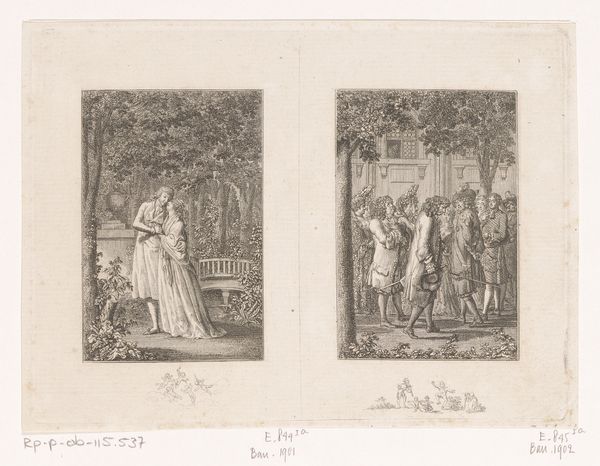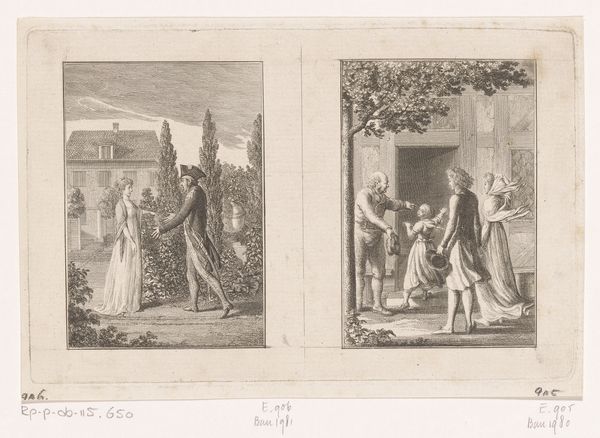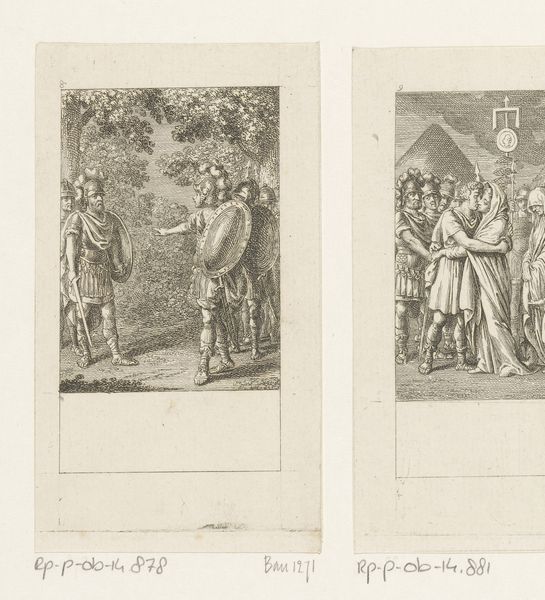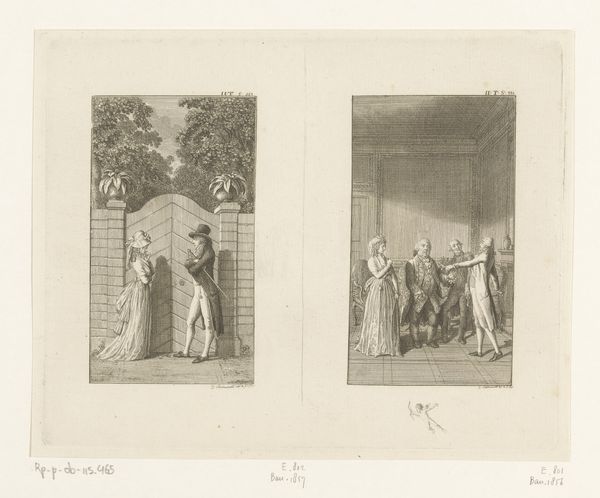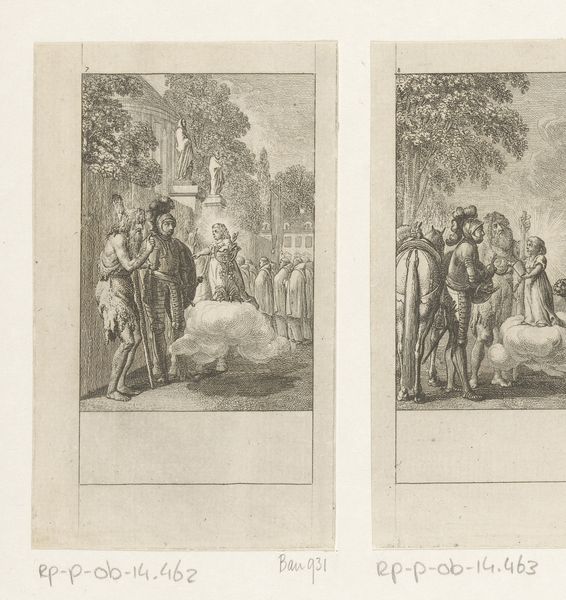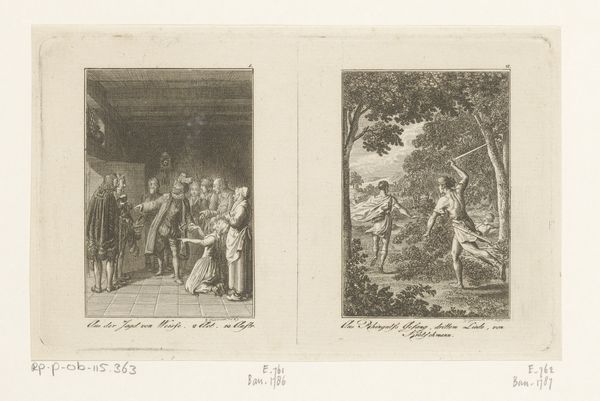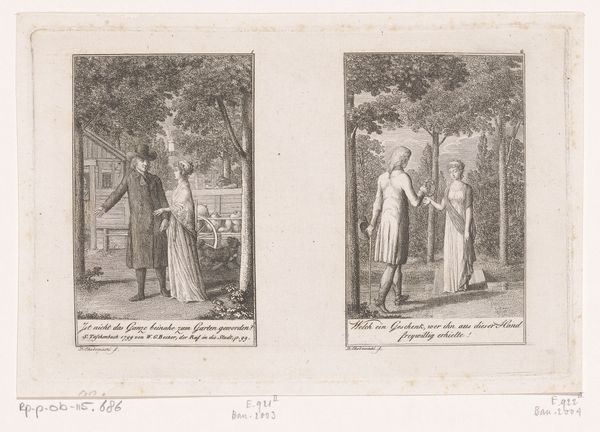
Twee voorstellingen uit de verhalen van Wilhelm Gottlieb Becker 1796
0:00
0:00
print, engraving
#
narrative-art
# print
#
pencil sketch
#
old engraving style
#
figuration
#
romanticism
#
history-painting
#
engraving
Dimensions: height 113 mm, width 166 mm
Copyright: Rijks Museum: Open Domain
Curator: Daniel Nikolaus Chodowiecki's "Twee voorstellingen uit de verhalen van Wilhelm Gottlieb Becker," made in 1796. What are your initial impressions? Editor: My eye is drawn to the distinct textures. Notice the clear labor in the precise, etched lines. The print medium emphasizes replicability; it's designed for widespread consumption. Curator: Absolutely, and that replicability underscores the story itself. The two scenes present narratives laden with romantic ideals and moral lessons, visualized in a way that imbeds into cultural memory. See how the figures' poses reflect dramatic themes common in late 18th-century storytelling? Editor: The cost of materials involved must have been fairly low, facilitating this broad dissemination. Its accessibility as a commodity would reach an expanding middle-class audience keen to absorb these morals. This touches on power dynamics within artistic production itself. Curator: Interesting perspective! I am more interested in the visual language it adopts, for example the figure adorned with fruit on his head—the imagery feels allegorical, tapping into classical symbolism to convey the story’s underlying values. Editor: And who controlled the meaning inherent in those symbols? I want to dig into Chodowiecki's workshop conditions, the engravers’ labor division, the distribution networks—understanding these helps expose this seemingly innocent visual for what it truly represents: a social transaction, a commodity embedding and furthering specific cultural attitudes. Curator: But the emotive content! Doesn't the romantic style evoke feelings of sympathy for the characters’ plight? That is part of what made it popular, a feeling of emotional truth conveyed through a familiar language. Editor: I agree with you there. It’s powerful to consider how printed imagery acted as a sort of connective tissue—allowing those ideas about relationships, duty, even virtue to infiltrate homes and minds. Curator: Studying its impact through time shows the potency of symbols and stories to perpetuate cultural values, to bind and influence future generations. Thank you, I find this image so potent still today. Editor: It’s a necessary reminder of how art, seemingly benign, is tied intricately into economics and societal norms. I will certainly look closer the next time.
Comments
No comments
Be the first to comment and join the conversation on the ultimate creative platform.
